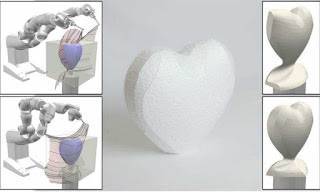A technique allows robots to determine whether they are able to lift a heavy box
Humanoid robots, those with bodies that resemble humans, could soon help people to complete a wide variety of tasks. Many of the tasks that these robots are designed to complete involve picking up objects of different shapes, weights and sizes.
While many humanoid robots developed up to date are capable of picking up small and light objects, lifting bulky or heavy objects has often proved to be more challenging. In fact, if an object is too large or heavy, a robot might end up breaking or dropping it.
With this in mind, researchers at Johns Hopkins University and National University of Singapore (NUS) recently developed a technique that allows robots to determine whether or not they will be able to lift a heavy box with unknown physical properties. This technique, presented in a paper pre-published on arXiv, could enable the development of robots that can lift objects more efficiently, reducing the risk that they will pick up things that they cannot support or carry.
"We were particularly interested in how a humanoid robot can reason about the feasibility of lifting a box with unknown physical parameters," Yuanfeng Han, one of the researchers who carried out the study, told TechXplore."To achieve such a complex task, the robot usually needs to first identify the physical parameters of the box, then generate a whole body motion trajectory that is safe and stable to lift up the box."
The process through which a robot generates motion trajectories that allow it to lift objects can be computationally demanding. In fact, humanoid robots typically have a high amount of degrees of freedom and the motion that their body needs to make to lift an object should meet several different constraints. This means that if a box is too heavy or its center of mass is too far away from the robot, the robot will most likely be unable to complete this motion.
"Think about us humans, when we try to reason about whether we can lift up a heavy object, such as a dumbbell," Han explained. "We first interact with the dumbbell to get a certain feeling of the object. Then, based on our previous experience, we kind of know if it is too heavy for us to lift or not. Similarly, our method starts by constructing a trajectory table, which saves different valid lifting motions for the robot corresponding to a range of physical parameters of the box using simulations. Then the robot considers this table as the knowledge of its previous experience."
The technique developed by Han, in collaboration with his colleague Ruixin Li and his supervisor Gregory S. Chirikjian (Professor and Head of the Department of Mechanical Engineering at NUS) allows a robot to get a sense of the inertia parameters of a box after briefly interacting with it. Subsequently, the robot looks back at the trajectory table generated by the method and checks whether it includes a lifting motion that would allow it to lift a box with these estimated parameters.
If this motion or trajectory exists, then lifting the box is considered to be feasible and the robot can immediately complete the task. If it does not exist, then the robot considers the task beyond its capacity.
"Essentially, the trajectory table that our method constructs offline saves the valid whole-body lifting motion trajectories according to a box's range of inertia parameters," Han said. "Subsequently, we developed a physical-interaction based algorithm that helps the robot interact with the box safely and estimate the inertia parameters of the box."
The new technique allows robots to rapidly determine whether they are able to complete a lifting-related task. It thus saves time and computational power, as it prevents robots from having to generate whole-body motions before every lifting attempt, even unsuccessful ones.
Han and his colleagues evaluated the approach they developed in a series of tests using NAO, a renowned humanoid robot developed by SoftBank Robotics. In these trials, NEO quickly and effectively identified objects that were impossible or very difficult to lift via the new technique. In the future, the same technique could be applied to other humanoid robots to make them more reliable and efficient in completing tasks that involve lifting large or heavy objects.
"Our method can significantly increase the working efficiency for practical pick-and-place tasks, especially for repeatable tasks," Han said. "In our future work, we plan to apply our approach to different objects or lifting tasks."




Comments
Post a Comment
Hi, I am so glad you enjoyed it. Thank you for taking the time to read my article and comment!